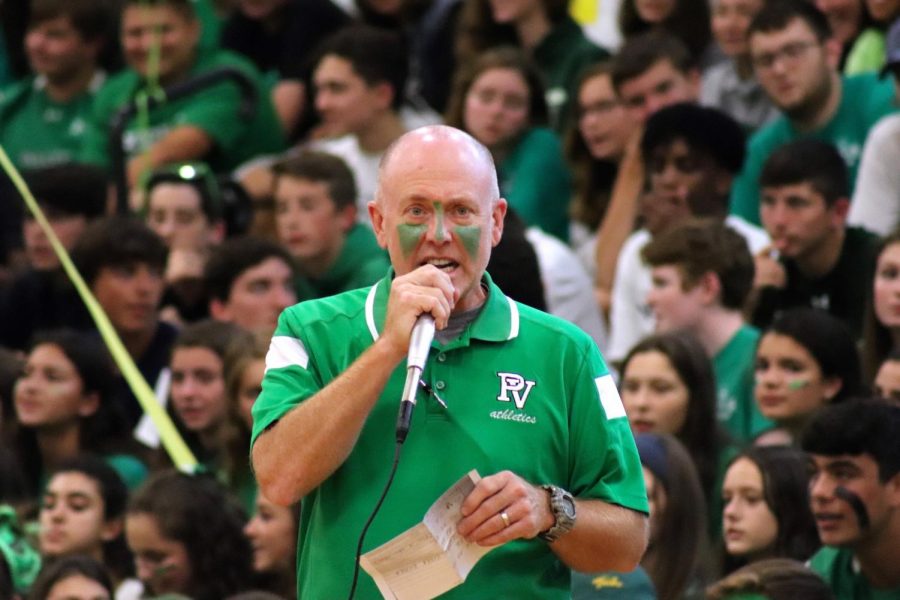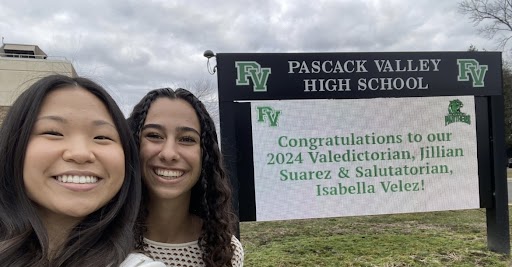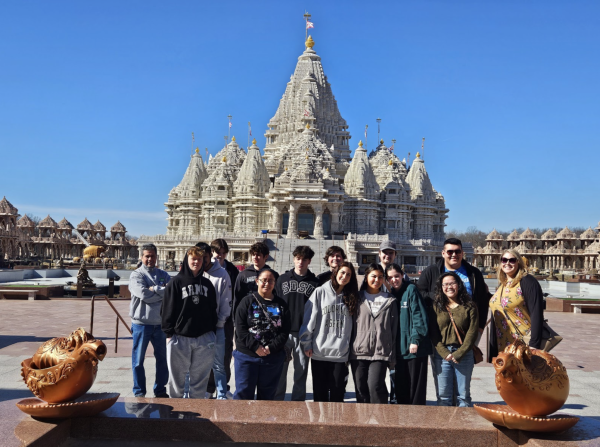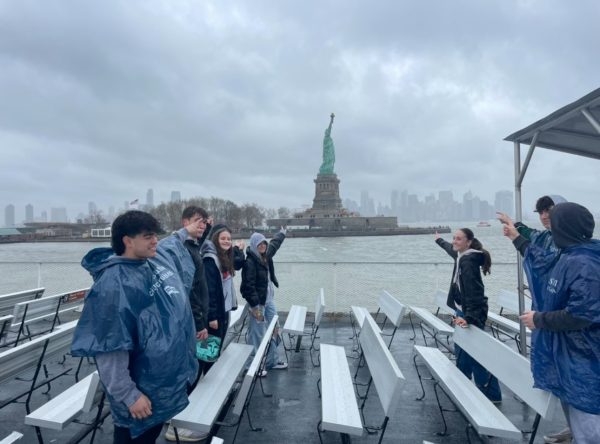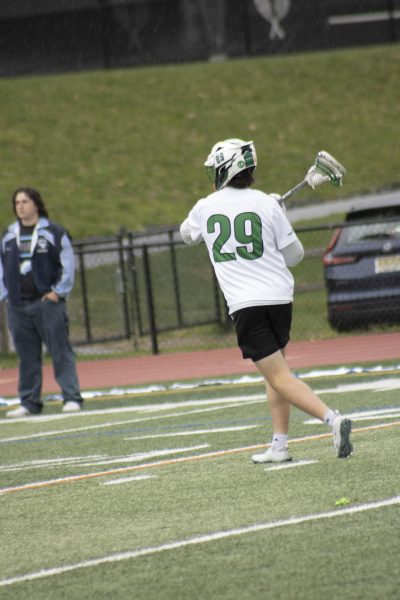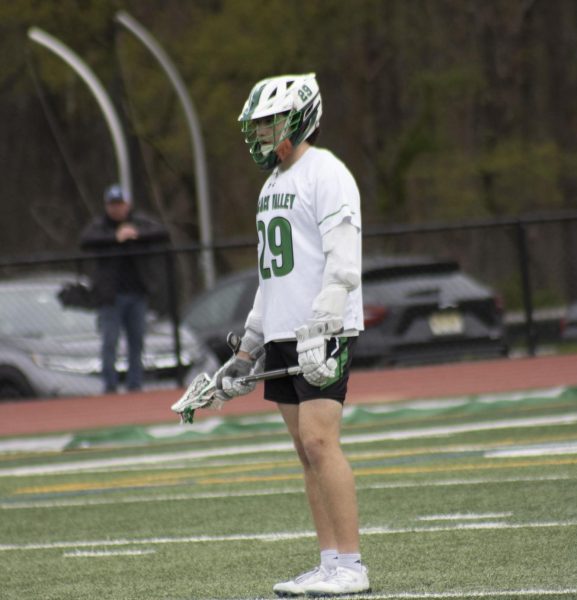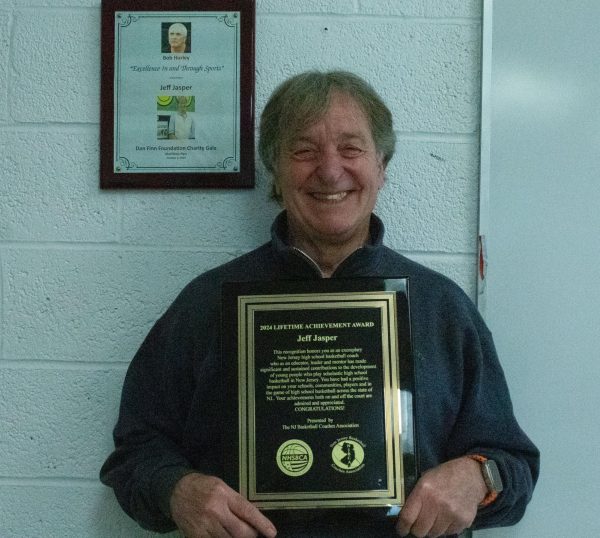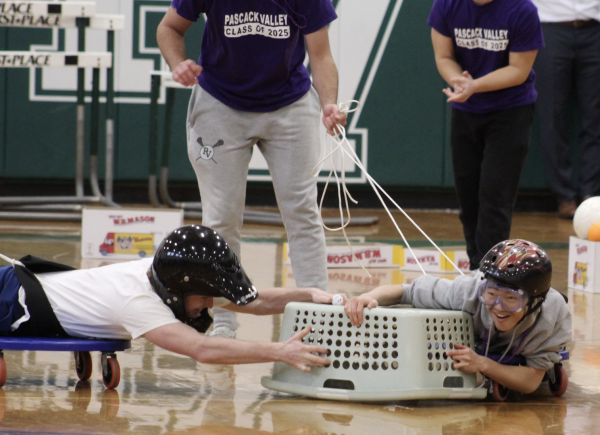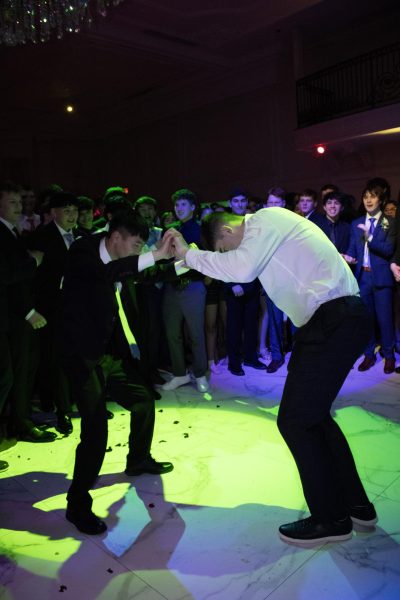The origins of the Valley Cup chant
Engineering teacher Jim Kennedy leads the Valley Cup chant last Sept. Kennedy has been leading the chant since 2018.
(Editor’s Note: At the end of every Pascack Valley pep rally, known as Valley Cup, a staff member leads the school in a traditional chant. Some have suggested that the chant might be disrespectful to Native American culture. In the fifth installment of our “What’s in a Name?” package, staff writer Treshan Nilaweera explores the history and connotations behind the Valley Cup chant.)
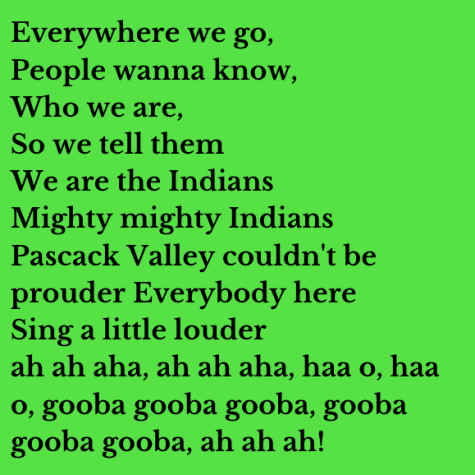
 After the June decision by the Board of Education to remove the mascot, the PV Indians have come to end. The removal of the Indian mascot also calls into question the continued use of the Valley Cup chant. In particular, some have suggested the last few lines could possibly be mocking traditional Native American chants.
After the June decision by the Board of Education to remove the mascot, the PV Indians have come to end. The removal of the Indian mascot also calls into question the continued use of the Valley Cup chant. In particular, some have suggested the last few lines could possibly be mocking traditional Native American chants.
PV Engineering teacher Jim Kennedy has led the chant since 2018. According to him, the basic version started out as a victory chant for the football team created by Rhys Wiliams, a now-retired science teacher. It was soon also sung at pep rallies. Wiliams created the chant at the request of head football coach Ralph Cavalucci in 1975. The chant was based on an old song called “Don’t You Just Know It” by Huey “Piano” Smith.
“We just made a connection with [the] silly song from 1960,” Williams said. “We used that as the basis and we called it the ‘ah ah’ song.”
The Valley chant was based on a song from the 1960s and is not an appropriation of an Indian chant. Despite speculation, any similarities with Native American chants are coincidental. It is simply a chant created by a former science teacher who was just trying to create a fun song for his school.
Staff writer Treshan Nilaweera interviews PV Engineering teacher Jim Kennedy about his experience leading the Valley Cup chant.
(Coming next: The district’s former policy for using the Indian head logo.)

Treshan Nilaweera is a senior and is The Valley Echo's first Tech Editor. He assists with anything related to the website, including working with SNO to...

